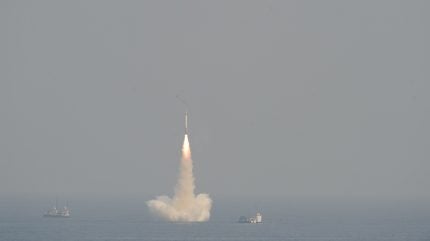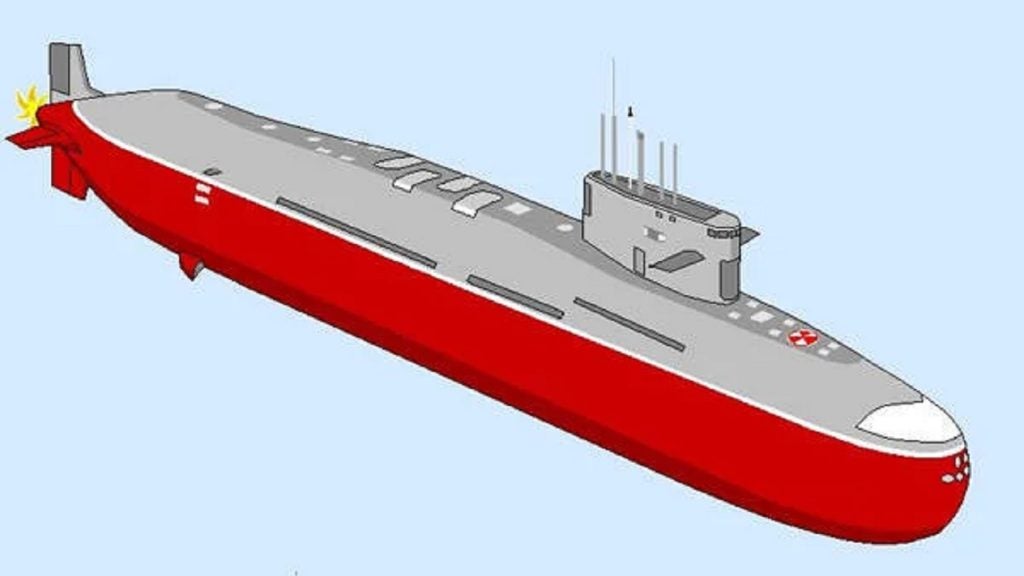
The commissioning of the INS Arighat, the second of four Arihant-class nuclear-powered ballistic missile submarines (SSBN) being developed for the Indian Navy, will serve to boost the country’s deterrence capabilities against growing Chinese influence in the Indian Ocean, according to GlobalData.
Commissioned into service on 29 August, the INS Arighat marked “a significant advancement” in India’s strategic submarine manufacturing capabilities, said Kandlikar Venkatesh, defence analyst at GlobalData.
“Armed with twelve K-15 Sagarika or four K-4 submarine-launched ballistic missiles, INS Arighat substantially enhances India’s second-strike capability while providing a robust deterrence against its nuclear armed neighbors Pakistan and China,” said Venkatesh.
One key reason on the need for India to be able to develop and sustain its own SSBN capabilities concern the ambitions of China, which, far from maintaining its claims as an Asia-Pacific-centric power, is looking to extend its diplomatic, territorial, and military claims far beyond its borders.
This includes patrols by purportedly nuclear armed Type 094 SSBNs into the Indian Ocean, augmenting the regular deployments of the People’s Liberation Army Navy (PLAN) into the region.
“China’s extensive naval buildup and the regular deployment of fully armed nuclear deterrence patrols by Type 094 submarines are perceived as a threat by other countries in the region, including India. In response, the deployment of Arihant-class submarines will provide India some degree of parity with its Chinese counterparts,” Venkatesh explained.

According to GlobalData, India is projected to spend approximately $31.6bn (Rs2.6trn) on procuring various classes of submarines over the next ten years, indicating the importance the country has placed on enhancing its subsurface capabilities.
The Indian Navy plans to commission two additional Arihant-class submarines over the next decade, each featuring a larger missile-carrying capacity to further strengthen India’s sea-based nuclear deterrence.
In addition, the development of the larger S5-class ballistic missile submarines, equipped long-range ship-launched ballistic missiles such as the K-5 (6,000km range) and K-6 (12,000km range), will add new capability to India’s submarine-based nuclear deterrence.
Arihant-class SSBNs
The Arihant class are a fleet of medium-sized SSBNs which form the naval element to India’s nuclear deterrence triad. Of a planned four-boat-class, two are currently commissioned (INS Arihant and INS Arighat), each displacing around 6,000 tonnes.
Based on the Russian Akula-1-class submarine, the Arihant submarines have a length of 110 metres (m), with accommodation for 95 crew. The class is powered by an 80MW pressurised water reactor, developed by the Bhabha Atomic Research Centre with assistance from a Russian design team.
By contrast, the UK’s Vanguard-class SSBNs measure 150m in length and displace around 16,000 tonnes, while the US Navy’s Ohio-class SSBNs reach up to 170m in length.
These classes were still smaller the Russian Navy’s former Typhoon-class SSBNs, which ran to 175m in length, displacing more than 23,000 tonnes, the largest submarines ever built.







